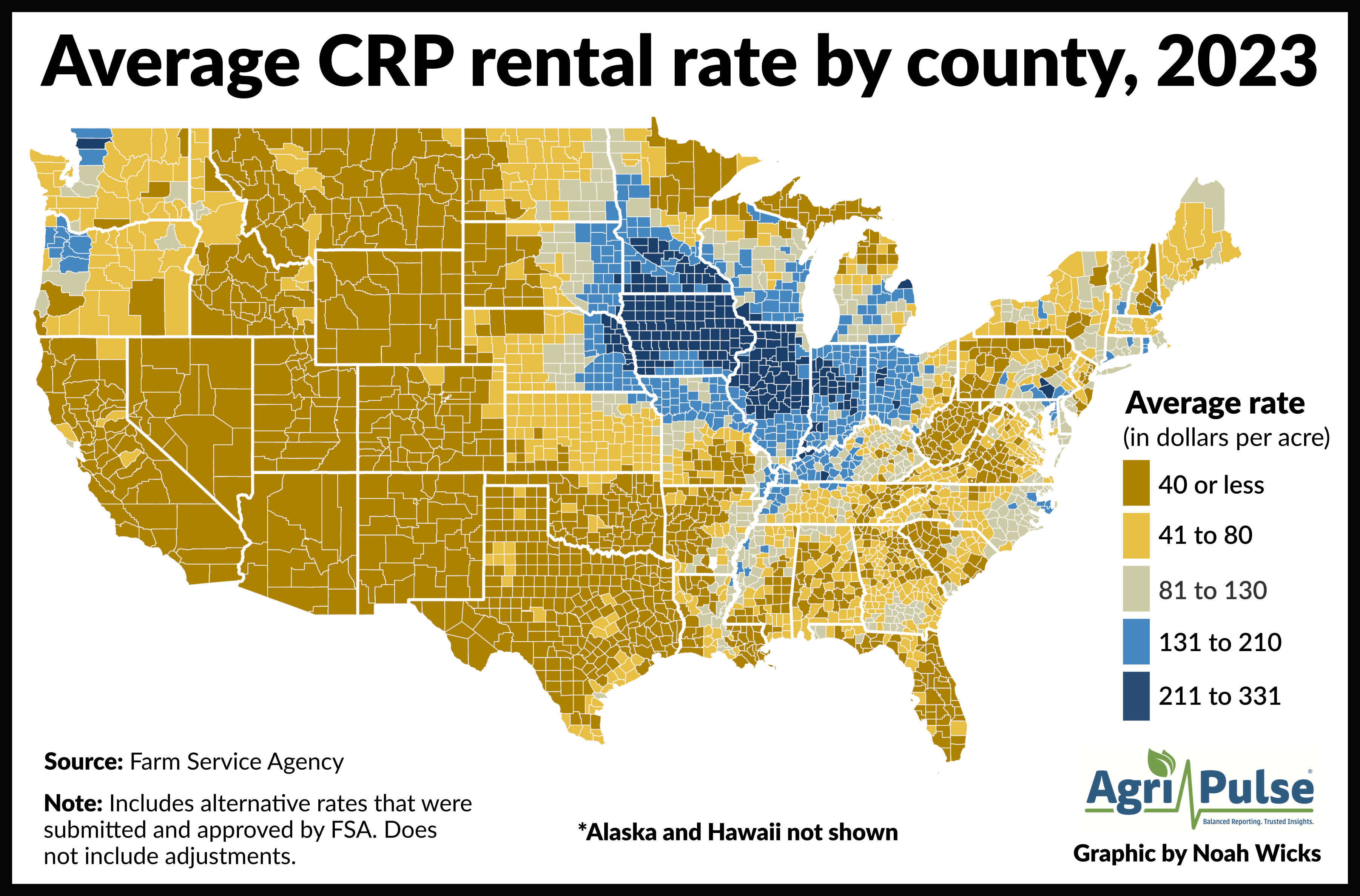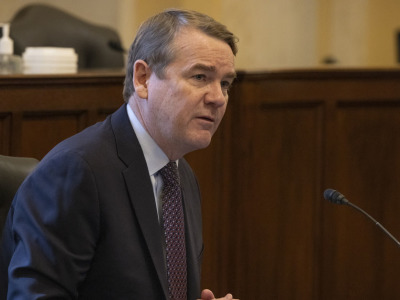When the wind blows in Prowers County, soil tends to follow.
The southeastern Colorado county sits at the heart of what is known as the “Dust Bowl” region, a place where the fear of prairie winds scattering tilled dirt through communities and towns looms large.
None of the dust storms that have rolled through western Kansas, southeastern Colorado, northeastern New Mexico and the Oklahoma and Texas panhandles in the past few decades have compared to the wind-swept chaos the region saw in the 1930s, thanks in part to government incentives that have paid farmers to convert highly erodible fields to native prairie. But Prowers County farmers are growing increasingly dissatisfied with the rates being offered through the Agriculture Department’s flagship land retirement initiative, the Conservation Reserve Program, and locals are concerned that those who choose to exit the program may be setting the region on the path to another major dust bowl event.
“We’re going to be returning to the Dirty Thirties in the 2030s,” Jillane Hixson, one of the county’s farmers, told Agri-Pulse. “It’s not going to be pretty.”
Hixson is one of the many producers questioning why the rental rates set by the Farm Service Agency for counties in the region and other highly erodible parts of the West tend to be far less generous than those offered to Midwestern counties. Farmers in 11 Western and Southern Plains states are offered between $13 and $87 per acre on average, while some in the Midwest see offers that begin at $100 per acre and go as high as $311.
This disparity even has some lawmakers wondering if the program is serving its original purpose of limiting soil erosion in at-risk areas, a crucial part of preventing another Dust Bowl. Sen. Michael Bennet, D-Colo., expressed his concerns about the potential impacts of the price difference on Western enrollment in the program at a recent farm bill conservation hearing.
“Obviously, these low prices discourage anybody from putting their farm in the CRP program, which is the opposite of what we should be encouraging,” Bennet said.
Hixson — who farms on the outskirts of Lamar, Colorado, with her brother — faced a difficult decision last year when she had to choose whether or not to re-enroll 795 acres of her family’s land in CRP. Her local FSA office offered her only $13 per acre, a $17-per-acre drop from when she enrolled in the program 10 years prior and $36 per acre less than she remembers receiving in the 1990s.
The reason? According to a letter from W. Scott Marlow, FSA’s Deputy Administrator for Farm Programs, the agency’s $13-per-acre determination came from the “extremely low productivity of the three predominant soils found on the land being offered.”
The agency bases annual rental payments on both the relative productivity of soils within each county and the average dryland cash rent, Marlow wrote. These determinations are typically made using county-level rent data from USDA's National Agricultural Statistics Service, and while FSA County Committees can request alternative soil rental rates if they provide adequate documentation, the Prowers County committee had not.
Hixson’s “Vona-style” soils had been identified as “eroded” under the FSA’s criteria and, while that certainly helped her land meet the standards for CRP enrollment, it brought down the overall value that the property would bring through the program.
Hixson, frustrated after receiving the rate determination from her local FSA office, gathered the signatures of 56 other concerned Prowers County farmers, brought the issue to her county committee, and sent letters to USDA leaders.
The Prowers County Board of Commissioners, the Prowers County Soil Conservation District and the City of Lamar also wrote to Agriculture Secretary Tom Vilsack in support of the cause, expressing their fear that disincentivizing CRP use in southeastern Colorado would worsen the “dirt blizzards” already impacting the region.
Drought-parched soils around Lamar were picked up by 100-mile-per-hour winds in January and February 2022, causing road and school closures, fatal highway accidents, health issues and heightened insurance claims, mayor Kirk Crespin wrote in an Aug. 8 letter.
“We shudder to think of the devastation that will be caused when farmers make painful, survival-based decisions to again cultivate our highly erodible soils and break out CRP land that surrounds and protects our community from these horrid ‘Dust Bowl’ conditions,” Crespin told Vilsack.
Don’t miss a beat! It’s easy to sign up for a FREE month of Agri-Pulse news! For the latest on what’s happening in Washington, D.C. and around the country in agriculture, just click here.
Hixson ultimately chose to enroll the land in the agency’s CRP Grasslands program for $13 an acre, receiving an additional $5 per acre for being located within the National Grassland Priority Zone. The decision, she said, was made out of fear of what would happen to Lamar if she did try to bring the land back into production.
“If we broke that out and the wind started blowing, it would bury Lamar,” Hixson said of the land she enrolled. “We would just absolutely fill our high school full of dirt.”
But not every producer makes the same decision. Prowers County experienced a 23% decline in the number of acres enrolled between 2012 and 2022, likely due in part to some producers not choosing to re-enroll in 2020 after contracts for nearly 78,000 acres expired.
Enrollment rates across the entire state of Colorado have remained more consistent, with only a 6% decrease in the 10 years following 2012. Other states in the region like Oklahoma, Texas, Utah, Kansas, Idaho and Montana have also seen enrollment declines over the 10-year period, though New Mexico, Wyoming and Nevada have experienced increases.
Western U.S. wheat growers recently brought their concerns about regional rental rate disparities to the National Association of Wheat Growers, though NAWG CEO Chandler Goule told Agri-Pulse the issue remains “somewhat controversial” among the organization’s geographically diverse membership.
Wheat producers in eastern Washington and Oregon, similar to the farmers in Prowers County, live in a dry climate and often face soil erosion challenges, making CRP a “very important” program for them to access, Goule said. At the same time, farmers in the Midwest are concerned the program’s rental rates are driving up prices in local land markets, making it more expensive for them to find land to lease.
The organization’s members decided to pass a resolution at the meeting supporting the idea of “regionalizing” the CRP program. This approach, Goule said, would help ensure the program is meeting the expectations of producers in different parts of the country.
“One size does not fit all,” Goule said. “CRP is really starting to demonstrate that.”
 Sen. Michael Bennet, D-Colo.
Sen. Michael Bennet, D-Colo.Another potential approach for addressing Western producers’ concerns would be to give more weight to soil erodibility in the agency’s rental rate determination process, an idea that Marlow said in his letter was “worth greater thought and deliberation.” A report by the Max McGraw Wildlife Foundation, a research organization focused on conservation, suggests Congress should completely reverse the rental rate structure and offer higher rates for less productive soil types and lower rates for more productive soil types.
“It pays the least for the least productive and the most for the most productive ground,” Lynn Tjeerdsma, a former policy adviser to Sen. John Thune, R-S.D., and current member of the Max McGraw Wildlife Foundation’s farm bill working group, said of the CRP program. “We’re recommending that that simply be reversed and that it pay the most for the poorer ground.”
Bennet, who sits on the Senate Agriculture Committee, told Agri-Pulse in a statement that Colorado’s current rates are too low to “create the result that anybody wants” and sees the farm bill as a way to address the issue.
“We need to raise the general rates and increase enrollment in CRP, and that’s something I’ll be pushing to do in the farm bill this year,” Bennet said.
For more news, go to www.Agri-Pulse.com.


